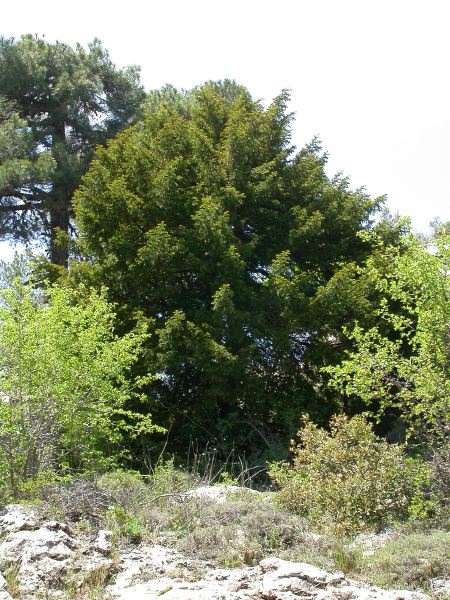Duminil, J., Fineschi, S., Hampe, A., Jordano, P., Salvini, D., Vendramin, G.G., and Petit, R.J. 2007. Can plant population genetic structure be predicted from life history traits? American Naturalist, in press.
 Population
genetic structure is a key parameter in evolutionary biology. Earlier comparative
studies have shown that genetic structure depends on species ecological
attributes and life history traits, but species phylogenetic relatedness
had not been accounted for. Here we reevaluate the relationships between
genetic structure and species traits in seed plants. Each species is characterized
by a set of life history and ecological features as well as by its geographic
range size, its heterozygote deficit (FIS) and its genetic structure (GST)
at nuclear and organelle markers, to distinguish between pollen- and seed-mediated
gene flow. We use both a conventional regression approach and a method
that controls for phylogenetic relationships among taxa. Related species
are shown to have similar levels of genetic structure. As a consequence
of this phylogenetic conservatism, many relationships between ecological
traits and GST observed in conventional analyses vanish when using phylogenetically
independent contrasts. Once covariation among traits is taken into account,
genetic structure is shown to be related with only a few traits such as
mating system for nuclear markers and seed dispersal mode or geographic
range size for organelle markers. Along with studies on invasiveness, diversification
rate or extinction risk, our study of plants genetic structure illustrates
the fact that few simple traits can predict the fate of species across
a broad taxonomic assemblage, a testimony of the highly contingent nature
of evolution.
Population
genetic structure is a key parameter in evolutionary biology. Earlier comparative
studies have shown that genetic structure depends on species ecological
attributes and life history traits, but species phylogenetic relatedness
had not been accounted for. Here we reevaluate the relationships between
genetic structure and species traits in seed plants. Each species is characterized
by a set of life history and ecological features as well as by its geographic
range size, its heterozygote deficit (FIS) and its genetic structure (GST)
at nuclear and organelle markers, to distinguish between pollen- and seed-mediated
gene flow. We use both a conventional regression approach and a method
that controls for phylogenetic relationships among taxa. Related species
are shown to have similar levels of genetic structure. As a consequence
of this phylogenetic conservatism, many relationships between ecological
traits and GST observed in conventional analyses vanish when using phylogenetically
independent contrasts. Once covariation among traits is taken into account,
genetic structure is shown to be related with only a few traits such as
mating system for nuclear markers and seed dispersal mode or geographic
range size for organelle markers. Along with studies on invasiveness, diversification
rate or extinction risk, our study of plants genetic structure illustrates
the fact that few simple traits can predict the fate of species across
a broad taxonomic assemblage, a testimony of the highly contingent nature
of evolution.
| Photo: Montane forest in SE Sapin, with Taxus bacatta, Prunus mahaleb, and Pinus nigra ssp. salzmannii. |